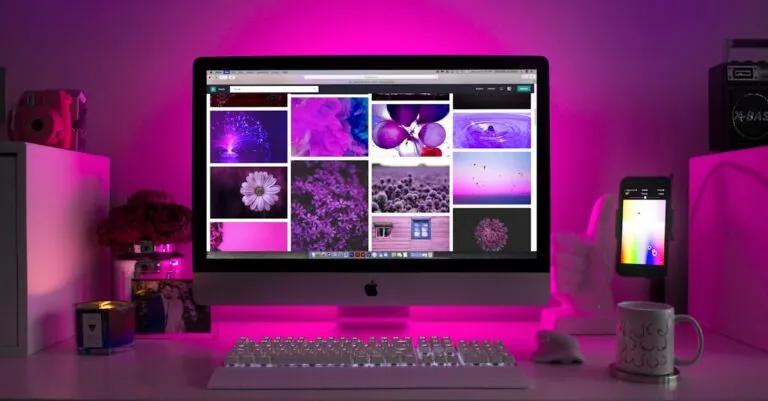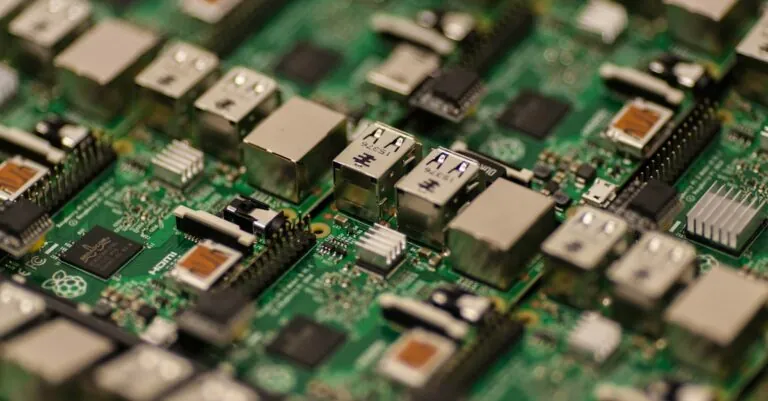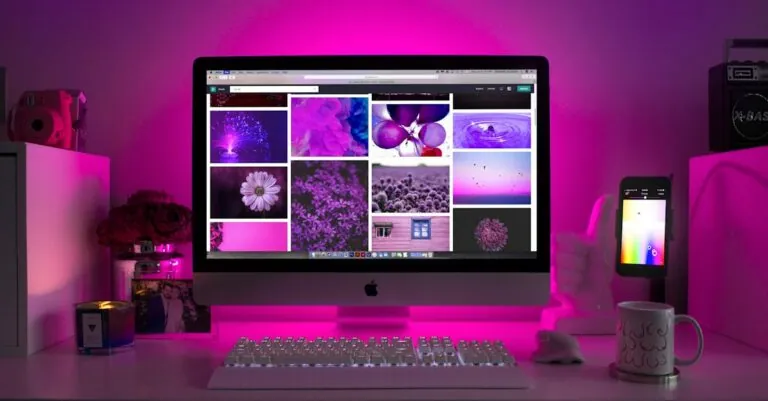Imagine waking up to a world where your coffee brews itself, your thermostat knows just how warm you like it, and your fridge reminds you to buy more milk. Welcome to the magical realm of Internet of Things (IoT) devices, where everyday objects become smart companions that make life easier and a bit more fun.
From smart speakers that play your favorite tunes to wearable fitness trackers that keep you motivated, IoT devices are revolutionizing how people interact with technology. These gadgets not only simplify daily tasks but also offer a glimpse into a future where connectivity reigns supreme. Join the ride as we explore some fascinating examples of IoT devices that are changing the game, one smart gadget at a time.
Table of Contents
ToggleSmart Home Devices
Smart home devices represent a growing category of Internet of Things technology, aimed at enhancing comfort and efficiency in residential environments. These gadgets transform everyday living through automation and connectivity, making tasks easier and more enjoyable.
Smart Thermostats
Smart thermostats adjust home temperatures based on user preferences and habits. For instance, the Nest Learning Thermostat learns user schedules, optimizing heating and cooling to save energy. Devices like Ecobee also offer features such as remote sensors for more accurate temperature control in various rooms. This ability to reduce energy consumption leads to cost savings on utility bills while maintaining comfortable living spaces.
Smart Speakers
Smart speakers provide hands-free voice control for various functions within a home. Devices like Amazon Echo and Google Nest Audio enable users to play music, control smart devices, and get information simply through voice commands. Additionally, these speakers often integrate with other smart home systems, allowing seamless control of lighting and temperature. Voice assistants such as Alexa and Google Assistant enhance user experience by answering questions or setting reminders quickly.
Smart Lighting Systems
Smart lighting systems give users control over home lighting via smartphones or voice commands. Philips Hue and LIFX offer customizable lighting options, allowing users to adjust brightness and color to suit specific moods or activities. These systems can be scheduled to turn on or off at designated times, improving energy efficiency. Smart lighting integrates with other devices, enhancing overall home automation for convenience and security.
Wearable Technology
Wearable technology exemplifies the integration of IoT devices into daily life. These gadgets enhance personal health, fitness, and connectivity.
Smartwatches
Smartwatches serve as versatile devices for communication and health tracking. They enable users to receive notifications, answer calls, and monitor heart rates from their wrists. Popular models include the Apple Watch and Samsung Galaxy Watch, which offer fitness apps and GPS capabilities. Users can access various platforms, creating a seamless experience between smartphones and watches. Many models support third-party applications, expanding functionality and user convenience.
Fitness Trackers
Fitness trackers focus on monitoring physical activity and encouraging healthy lifestyles. Devices like Fitbit and Garmin track steps, sleep patterns, and calorie consumption. They often feature heart rate monitors, helping users gauge their fitness levels. Most models synchronize with mobile applications, providing detailed insights into progress and trends. Many fitness enthusiasts prefer these trackers for their simplicity and effectiveness in promoting active living.
Industrial Internet of Things
Industrial Internet of Things (IIoT) devices optimize processes across various industries, ensuring increased efficiency and productivity. These devices present an essential aspect of modern industrial operations.
Smart Sensors
Smart sensors, used extensively in manufacturing environments, monitor parameters like temperature, humidity, and pressure. Many industries rely on these sensors to gather real-time data that drives decision-making. Their deployment enables quick identification of issues, leading to faster resolution time. This data collection enhances quality control and reduces waste significantly, making processes more efficient.
Predictive Maintenance Devices
Predictive maintenance devices play a crucial role in maximizing equipment uptime. These devices use advanced analytics to assess machinery health and suggest maintenance only when necessary. Their capabilities help prevent unexpected failures, resulting in significant cost savings for companies. By monitoring wear and tear, these systems ensure that machines remain operational, reflecting a proactive approach to industrial management.
Healthcare Applications
Healthcare embraces IoT devices to enhance patient care and improve outcomes. These technologies facilitate real-time monitoring and streamline medication management.
Remote Patient Monitoring
Remote patient monitoring devices track vital signs, improving patient management outside clinical settings. These devices often include wearables with heart rate sensors, glucose monitors, and blood pressure cuffs. Data sent to healthcare professionals enables immediate intervention when necessary. Trends in patient health emerge quickly, allowing providers to adjust treatment plans efficiently. Studies show that remote monitoring reduces hospital readmissions by up to 30%, demonstrating its effectiveness in chronic disease management.
Smart Pill Dispensers
Smart pill dispensers automate medication management for patients, ensuring adherence to prescribed regimens. These devices feature digital reminders and notifications that help users take medications on time. Some dispensers track medication intake and provide alerts to caregivers if doses are missed. According to the World Health Organization, enhancing medication adherence can lead to a 50% improvement in treatment outcomes. This technology simplifies daily routines and supports better health management for individuals with complex medication schedules.
Agricultural IoT Devices
Agricultural IoT devices play a crucial role in modern farming practices by enhancing productivity and resource management. These technologies provide farmers with the tools needed for efficient agricultural processes.
Soil Moisture Sensors
Soil moisture sensors measure the water content in the soil, enabling precise irrigation management. These devices report data in real-time, allowing farmers to determine when to irrigate crops. Wireless transmission facilitates immediate access to soil conditions, promoting timely decisions. By preventing over- or under-watering, these sensors help conserve water and optimize crop yield. Various models, such as capacitive and resistive sensors, suit different soil types and farming methods. Adopting soil moisture sensors typically leads to significant reductions in water usage, achieving decreases of around 30%.
Smart Irrigation Systems
Smart irrigation systems automate the watering process by utilizing data from various sources, including weather forecasts and moisture sensor readings. These systems adjust watering schedules based on real-time conditions, ensuring optimal moisture levels for crops. By incorporating advanced technologies like drip irrigation and rain sensors, they promote water conservation while maintaining healthy plants. Many smart irrigation systems also provide remote management capabilities, allowing farmers to control devices via smartphones. Utilizing these systems generally results in water savings of approximately 20-50%, proving beneficial for both the environment and overall farm efficiency.
The evolution of IoT devices is reshaping how individuals interact with their environments. From smart home technologies to wearable health monitors and industrial applications, these devices significantly enhance efficiency and convenience. As connectivity continues to grow, the potential for IoT to improve daily life and business operations expands. Embracing these innovations can lead to smarter choices and better resource management. The future of IoT promises even more exciting advancements that will further integrate technology into everyday experiences.



